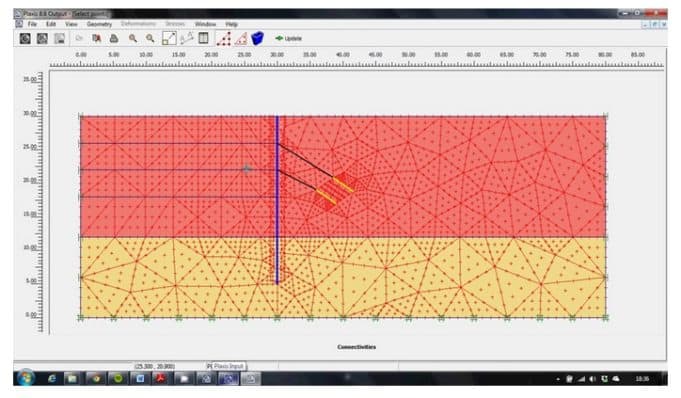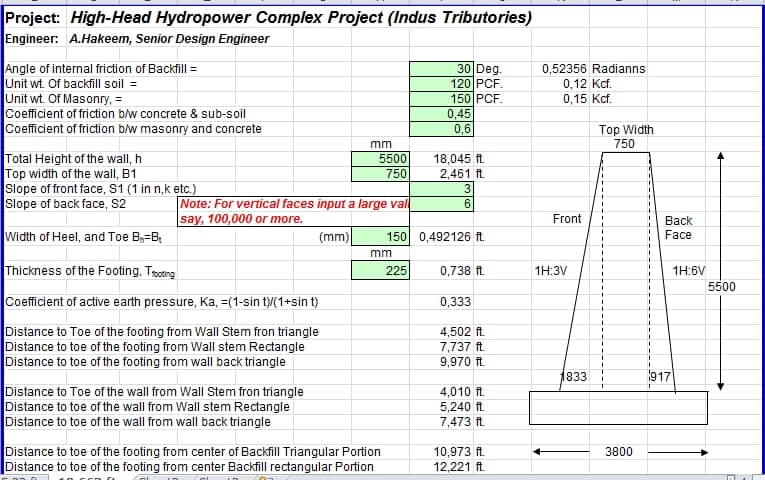

Typically 6″ of packed gravel base is recommended. If you want a straight wall that lasts a lifetime without shifting and moving, you’ll want to put down a layer of packed gravel base (or concrete) before adding your first row of blocks. Step #2 – Pack and level gravel base material If you’re installing your wall on a hill or slope, I cover that toward the end of this tutorial. Make sure to dig your trench so that it is level. Digging too shallow will compromise the integrity of your wall. That will allow for six inches of packed paver base and half of the bottom block to be buried. If you’re using 6″ tall blocks like I am here, you’ll want to dig about 9″ deeper than ground level. Trench Depth – The trench needs to be deep enough for at least six inches of packed gravel base material and half of the height of your blocks. The blocks I’m using here are 10.5″ deep, so a 20″ wide trench is recommended. This will allow for at least 6″ of drainage gravel behind the wall and give you some room to work. Trench width – Dig your trench about twice as wide as the depth of the blocks you are using (info on selecting blocks is below).

It doesn’t have to be perfect just give yourself a line to follow.

Retaining wall to infraworks how to#
How to Build a Retaining Wall Step by Stepįor the step-by-step, you can either watch the video or keep reading.įirst, mark the location of your wall by either dragging a shovel in the dirt, using stakes and string or even spraying the ground with spray paint. These are the blocks I will be using in this tutorial.įor retaining walls taller than three feet, you will likely need a building permit and to hire a structural engineer to help with the design of the wall. They also have angled cuts on the sides for building curves in your wall. The lip on the back locks the blocks into place and automatically creates a natural slope to the wall for added strength. They are widely available, easy to work with, and relatively inexpensive. To give you an idea of size, the larger stones are 3.5″ x 10.5″ x 7″ (height x width x depth).įor larger retaining walls up to three feet high, these 6″ x 16″ x 10.5″ concrete garden wall blocks are the best for DIY projects. They are lightweight, easy to move, and you can buy them (or something similar) at most home stores. There are hundreds of different retaining wall blocks out there, but let me save you some time.įor small garden walls that will be less than eighteen inches high, you can use smaller blocks like the Pavestones in the image below. The Best Retaining Wall Blocks For DIYers Paver Base (aka crushed stone base) – Amount depends on the size of the wall.Construction Adhesive (one or two tubes is plenty for most walls).



 0 kommentar(er)
0 kommentar(er)
